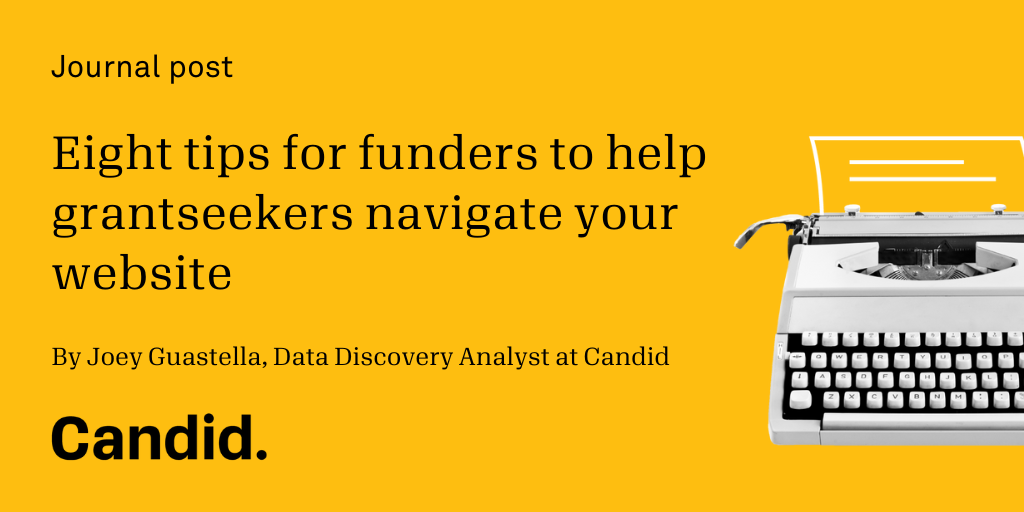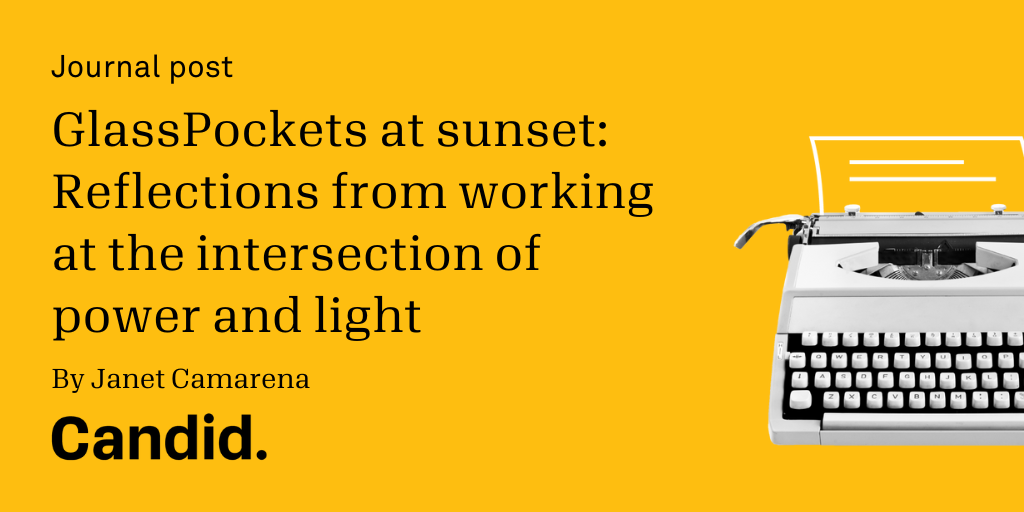True Board Engagement: How openness and access to board conversations has changed Creating the Future
(Karl Wilding is the director of public policy at the National Council for Voluntary Organisations (NCVO), the umbrella body for charities and the volunteer movement in England. Justin Pollock the principal and founder of Orgforward, a community-focused consultancy working with organizations and their leadership to build the capacity to sustain thriving communities. Both Karl and Justin are Creating the Future board members.)
It’s a widely held maxim that sunlight, read as transparency and openness for the purpose of this post, is the best disinfectant. While true, we feel this view has an unfortunate undertone of emphasising the negative: greater transparency is needed in order to prevent and/or catch wrongdoing. It focuses attention on what we hope to avoid rather than what we hope is possible.
At Creating the Future, rather than thinking of sunlight as that thing that disinfects, we embrace the photosynthetic view that letting the light in allows for growth and transformation. We recognize our role in supporting thriving communities and believe that the community should have a role in creating our success at all levels of the organization. Though Creating the Future is not a grantmaking foundation, we believe that all organizations, including foundations, gain by opening up to and actively engaging the communities we are passionate about and that we profess we serve.
In a conversation about boards and governance recently, someone remarked to one of us that “transparency can be transformational,” and it’s this sort of thinking that powers Creating the Future’s approach to leadership, trusteeship, and governance. Beyond just being transparent – allowing people to see us, we are open – people can actually interact with us and influence our growth in real time. This approach to governance is open, not just in the sense of visibility, but open to challenge, praise, and, since board members live stream from various places around the world, the occasional ribbing for the state of our living rooms and barking dogs (how much more “real life” can it get than that?).
All well and good in theory. But what does this really look like in practice and what does it make possible for us as trustees and anyone else interested in the work of the organization we serve?
In practice, our board meetings are entirely open, end to end. We leverage Creating the Future’s presence online. Prior to every monthly board meeting, our board chair posts a blog providing the context and agenda for our upcoming meeting, our operational leaders post video progress reports, and you can find a link to our upcoming meeting which are all live-broadcast using Google Hangouts.
We use Twitter, monitoring our hashtag during the meeting, to encourage people to share their curiosity and brilliance so we can respond in real time to the ideas that break us out of the group-think commonly found when people of like passions gather. But it doesn’t stop there: most board meetings, we invite a guest to take part in the broadcast in the anticipation that they might just lead us to change the questions that we’re asking ourselves. And if you missed something and want to know what happened next, or would like to check back on something we did, we’re in plain sight - all the meetings are archived and available on the website.
And anyone can see this. In fact, the world gets to see it at the same time as we can, and it’s the internet, so they can share their opinions and thoughts freely. Now, we understand that this might be heresy to a foundation, in which board meetings often include sensitive topics such as grantee deliberations, however, board meetings also include strategy, planning, and policy discussions, which are exactly the conversations that thrive at Creating the Future through this open model. Thankfully the web makes it easy to segment out each part.
You might be wondering what is the value of this approach and how does it ultimately help us?What does all this effort make possible?
At the top of our list: better conversations that lead to better decisions. We think this might be one of the most compelling reasons for foundations to consider, since foundations are in the business of decision-making and idea generation. What does that look like? We actually dialog with one another, asking better informed questions, hearing different perspectives and reflections, getting positive affirmation, and gaining more confidence in the decisions we make. The last bit is important: we’re all human, taking on leadership as a trustee isn’t always easy, so it’s nice to get a bit of praise for a decision we’ve made.
For us as board members, the most powerful thing about openness is that it fosters conversations where there is nothing to hide and therefore nothing to be ashamed or embarrassed by (we are sure that there is some social science that helps explain this – but we just feel it in our bones). Any decision we make has been vetted and thought through. The assumptions that can often go unidentified when making decisions are all brought into the open so that we, in our leadership roles, deeply understand the implications and rationale behind the actions and decisions we make. Personally, we love this aspect as it encourages our own growth and strengthens our resolve around the beliefs and values we hold.
Next is the thing we often hear is missing - better engagement. We’re all in one way or another seeking to better engage board members, beneficiaries, and stakeholders. For us, this is at the foundation of our work. We know we are “better together” when we can draw on the abundant wisdom that is out there. So involving stakeholders and other interested people in the leadership and governance of Creating the Future is pretty much saying to them that they are as important as us – it’s not about the people in the room, but rather about the ideas, plans, and actions that result from the gathering.
Finally, we find openness raises trust – among each other as trustees, with the community that supports us, and with the staff that work tirelessly to facilitate the execution of our strategy. Everyone has an opportunity to shape decisions and everyone can see we’re just ordinary people, not some nonprofit rock stars or even mysterious alchemists who work in dark smoky rooms. And we reckon ultimately that engagement and trust build capacity: people want to join us on the journey because they realize they can be part of it in meaningful ways.
The skeptics at this point are probably wondering: what could go wrong? What about sensitive issues, confidentiality, or errant voices? This is straightforward: there’s always going to be stuff we want to think or talk about without the world watching, and for that we allow for closed sessions. And we do this transparently as well, acknowledging the rationale each time it is needed. We think people appreciate us for being honest and up front about that. And for those who may fear negative comments or hijacked conversations, all we can say is that it just doesn’t happen. Rather than taking us in a direction we don’t want to go, external voices elucidate new paths that we excitedly travel down and may not have seen because of the inherent nature of “group think.”
Things have occasionally gone wrong: the technology is the obvious candidate, with broadband connections dropping out. But this is part of the warp and weave of normal life, and we’ve found people stick with us. In fact, the biggest risk is that no one cares, no one’s watching. And if that’s the case you may well have some bigger issues to contend with, but that’s a topic for another blog post.
Our aim is to tip the scales from the common practice of making openness rare and exclusivity common (think of most every board meeting you’ve been to), to making exclusivity that rare bird that is hard to find. In fact, we honestly have not experienced anything scary: openness has become mundane, with many of us shedding the nervousness that comes from thinking about the fact that the world could be watching. This is a good thing, unless you are offended by seeing an untidy living room or a person eating their lunch.
Openness is our “not-so-secret sauce.” Maybe it’s just the people around the virtual table, maybe it’s keeping the meetings open to guests, or just the sense that we’re visible, but the meetings are highly enjoyable and stimulating; plus, we get business done. We think opening up gives boards more vitality, richer conversations, and better engagement. And we reckon fear of failure, of “getting found out,” is the biggest barrier to opening up. So foundations: be brave, join us for one of our board meetings to see how we roll, then hopefully try this format for yourself. You have nothing to lose but your broadband connection.
--Karl Wilding and Justin Pollock



